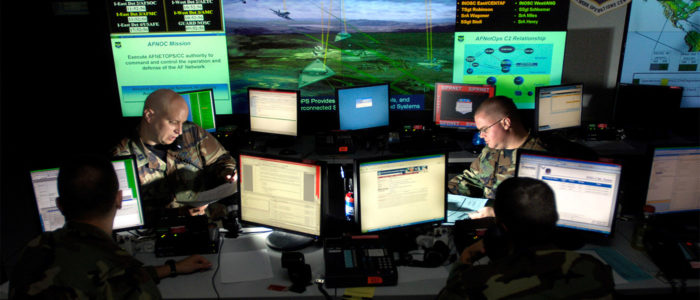Deterrence is not a new concept for the students and practitioners of International Relations and Security Studies. However, just for the sake of review, it is an act of manipulating other’s behaviour through threat of use of force. Therefore, it involves inducing fear of punishment in a potential adversary to not take action. Or even if the action is taken, the cost would be increased to such an extent that the victory would become null and void. It is true that the narrow definition of deterrence involves military tools as a part of statecraft, while broader definition expands to the scope of economic coercion, diplomatic isolation as well as information operations. Since the threats in the 21st century have overlapped in different domains of security, so where this development leads us with the concept of deterrence. Has it been affected too? This novel overlapping of the domains with particular reference to deterrence, yet an underexplored concept, is known as Cross Domain Deterrence (CDD).
The fifth domain of war is cyber. The other domains of land, sea, air and space were covered with deterrence. But the cyber has remained oblivious to it in particular and technological advancements involving critical infrastructure in general. On the other hand, it was a cyber-weapon “Stuxnet” that destroyed numerous centrifuges in Iranian nuclear facility of Natanz in the late 2000s. CDD entered the defence academic circles during the end of Bush administration. It stemmed from the fact that the leadership of the United States had to grapple with the problems of emerging challenges in outer space as well as cyberspace. CDD is defined as the use of threat of one type or some combination of different types, to dissuade an adversary from taking actions of another type to cause changes in status quo. Hence, the common feature of CDD is the use of technology for political ends of deterrence.
With the increasing number of tools of coercion as well as war-fighting concepts, the capabilities, may they be in an asymmetry, are providing opportunities for comparatively weaker states to show aggression towards a powerful state. North Korea and Iran can be cited here as examples and employed tools like cyber weapons, information espionage, etc. Such challenging complexities are growing as a consequence of new domains of war namely cyberspace and outer space. In tandem to it, was the peaceful rise of China and its military modernisation as well as contestation of power in the Pacific region. On other hand, Russia has also shown an acute degree of resurgence and aggression in Estonia, Georgia and Ukraine. It was further compounded by American engagements in Iraq (2003) and Afghanistan (2001) coupled with Iranian and North Korean nuclear issues.
CDD has also evolved over time yet remained underexplored over the years comprising the first Offset (Early Cold War – Nuclear era), the second Offset (Late Cold War – Advance Weapon Systems and Precision Guided Munitions) and the third Offset (Technology, AI, Quantum Computing). In the 21st century, due to the forces of globalisation, CDD related concerns have increased. The vulnerabilities and linkages within the critical infrastructure in space and cyberspace are more prominent in contemporary era to seek opportunities and counter the challenges. This poses a complex defence problem as to how the CDD should be theorised. One aspect of this dilemma is that, undoubtedly, the cyberspace has provided such an enormous manoeuvring capability for cyber weapons and elements of coercion that deterrence has become questionable comparatively. Moreover, it is also being debated that if such a state of affairs became an official or unofficial practice of the states, it would liquidate the traditional notion of deterrence and its power. Because of these reasons, there is scarce literature available on CDD and therefore this area of deterrence remains underexplored. However, the proponents of technological advancements and innovation will explore theoretical debates revolving Cross-Domain Deterrence. So, where CDD does comes into effect? “When an opponent has no incentive to initiate or escalate conflict at any given intervention or escalation threshold in any given domain of warfare – both vertically and horizontally within that domain and laterally into one or more additional domains of warfare – successful cross-domain deterrence can be said to be in effect.”
Making a context for South Asia, what is the standing of Pakistan against the backdrop of all aforesaid developments? If we look at the aspirations of India both of regional and international scope, it is behaving as a revisionist power while asserting its influence in the international system. Therefore, the arch rivalry of India and Pakistan is and would be contesting in the realm of Cross Domain Deterrence. The Pulwama attack is one such example, where, while remaining under the nuclear threshold, both the states engaged militarily, where technological advancement coupled with an element of surprise paved the way for war of words in information environment. Moreover, Pakistan is also facing hybridity of threats posed by India from the eastern border and instability from the Western border of Afghanistan. Water crisis and the Kashmir quagmire are other such examples. CDD implementation by Pakistan is a question too early to ask. We have to look at the development of the said literature in tandem with its application on international stage. However, the state of Pakistan can work on the development of its literature by engaging in different simulation exercises and research work being done in the United States. The deterrence by Pakistan is only linked with war of words against its adversary on social media platforms which means war of narratives as of yet.
There is no doubt that the nation states that would not go with the technological advancements of the 21st century, will lag behind, may it be sectors of security, economy, politics and society.
